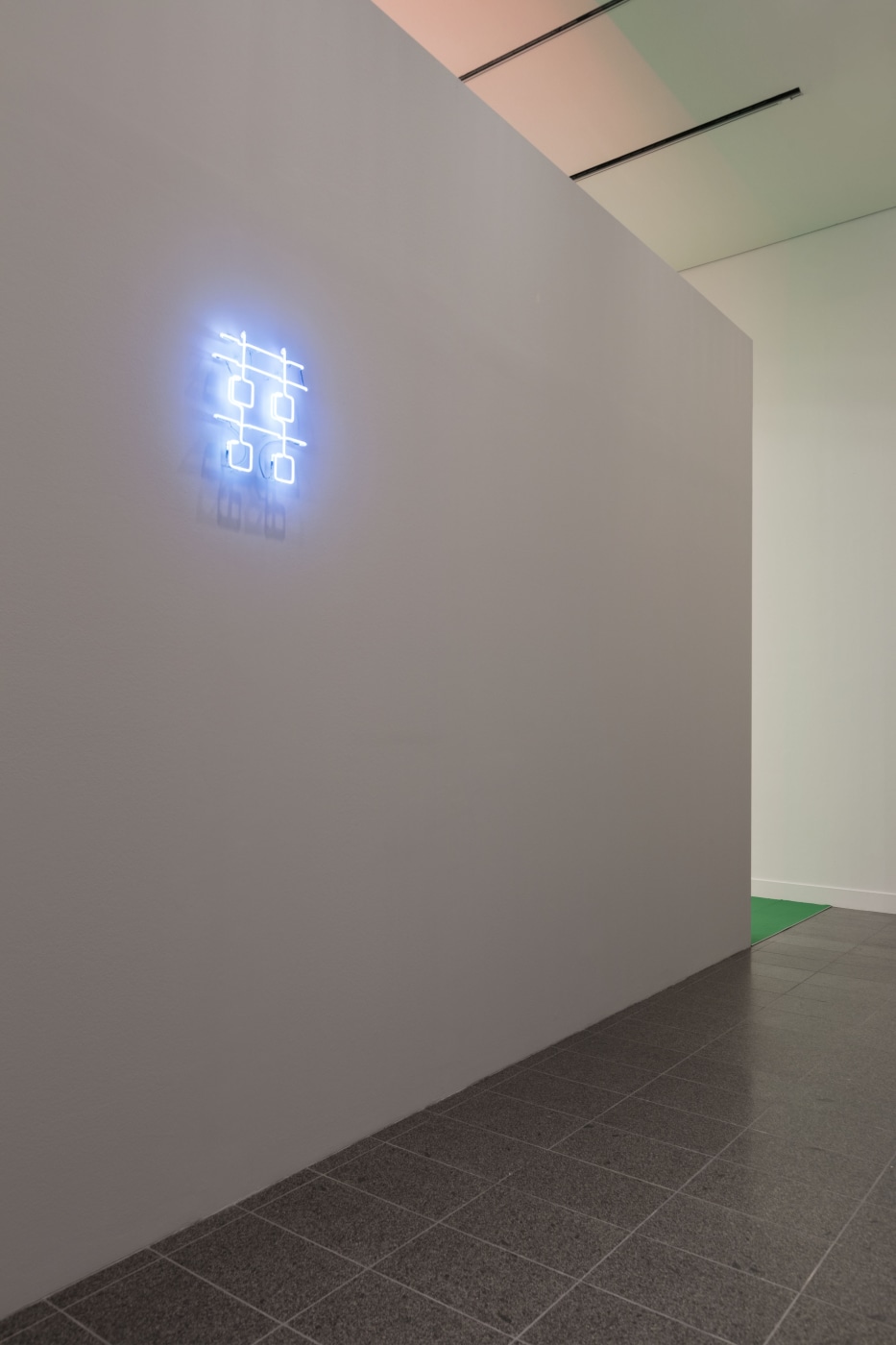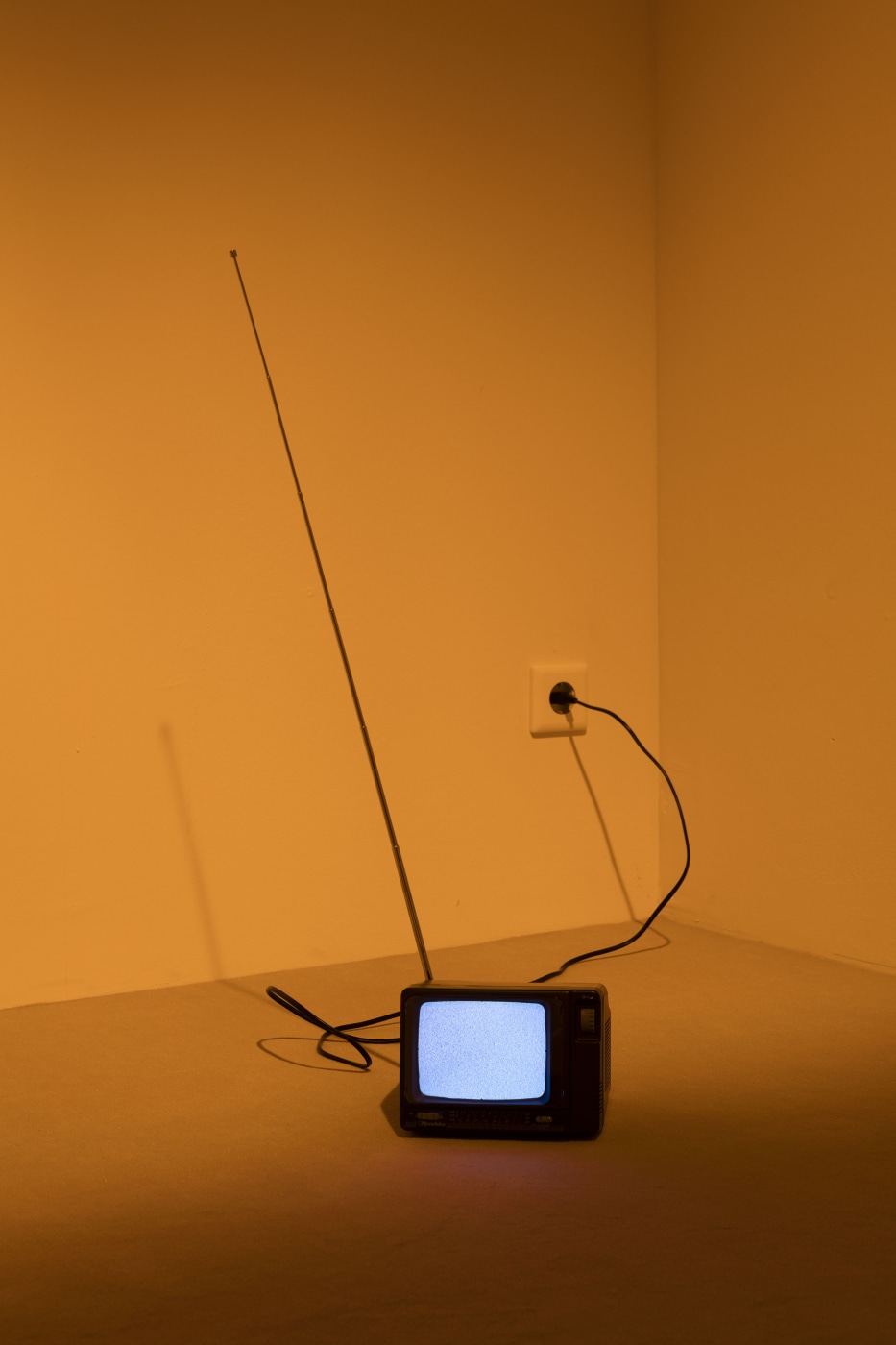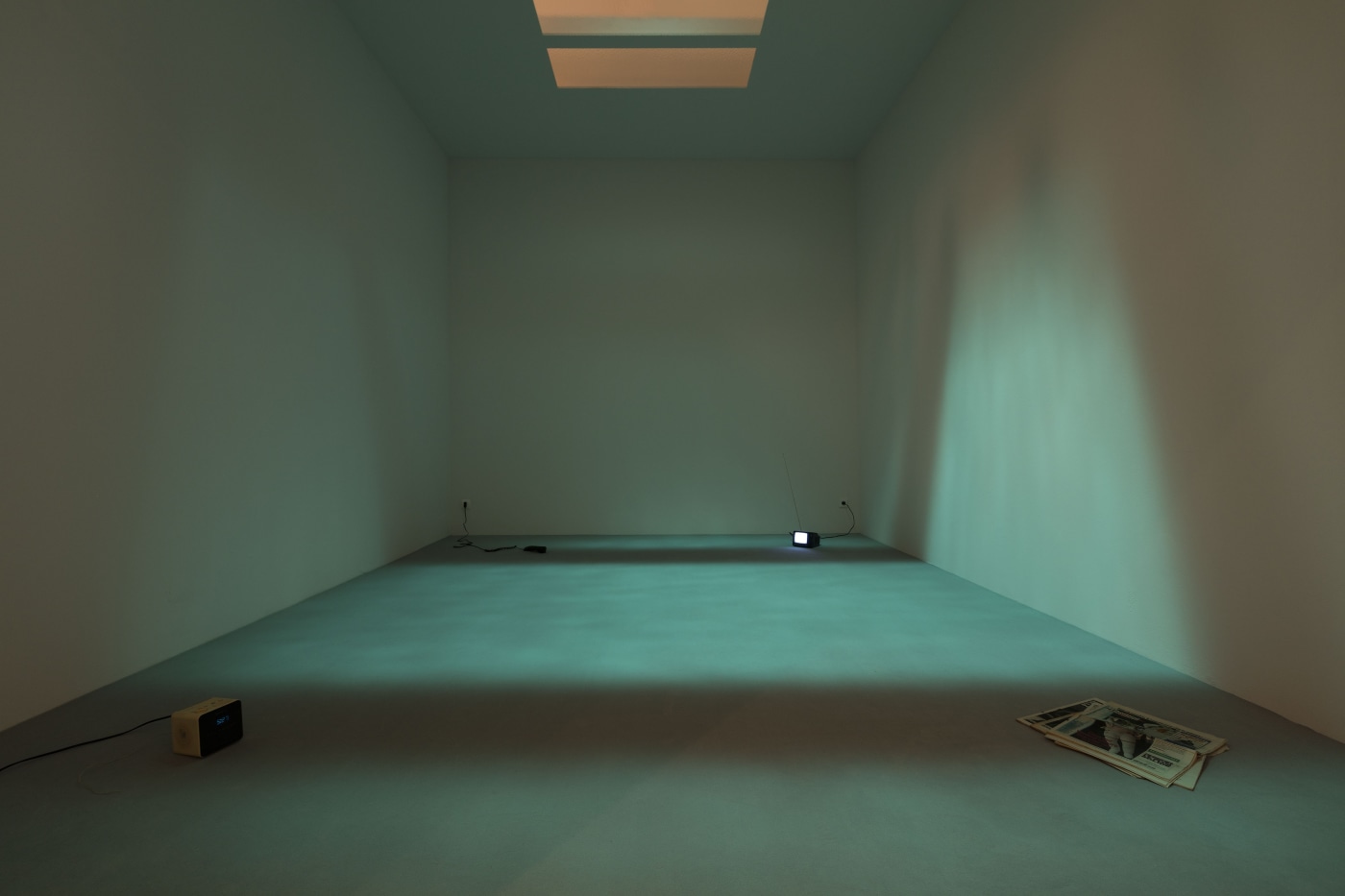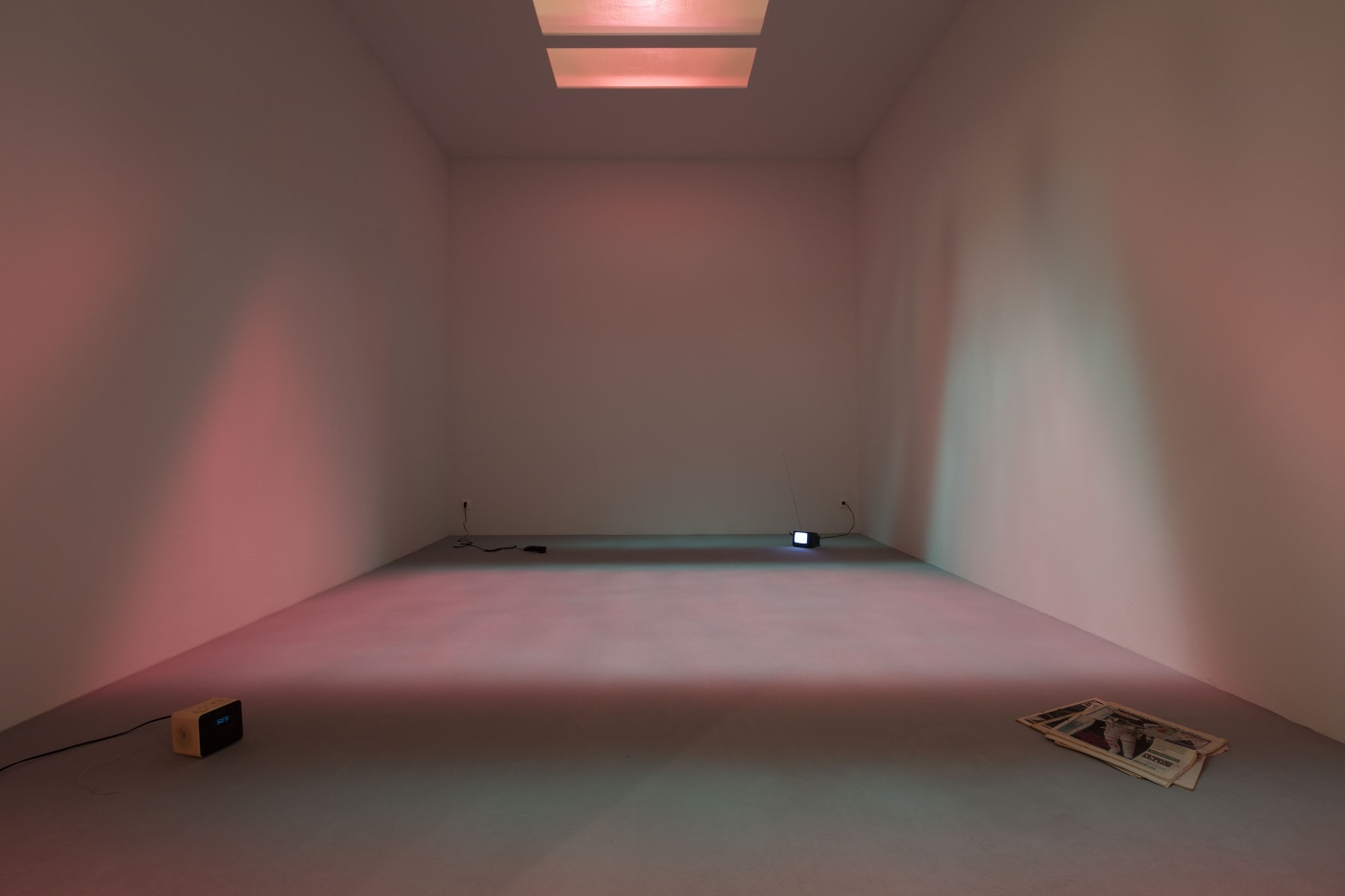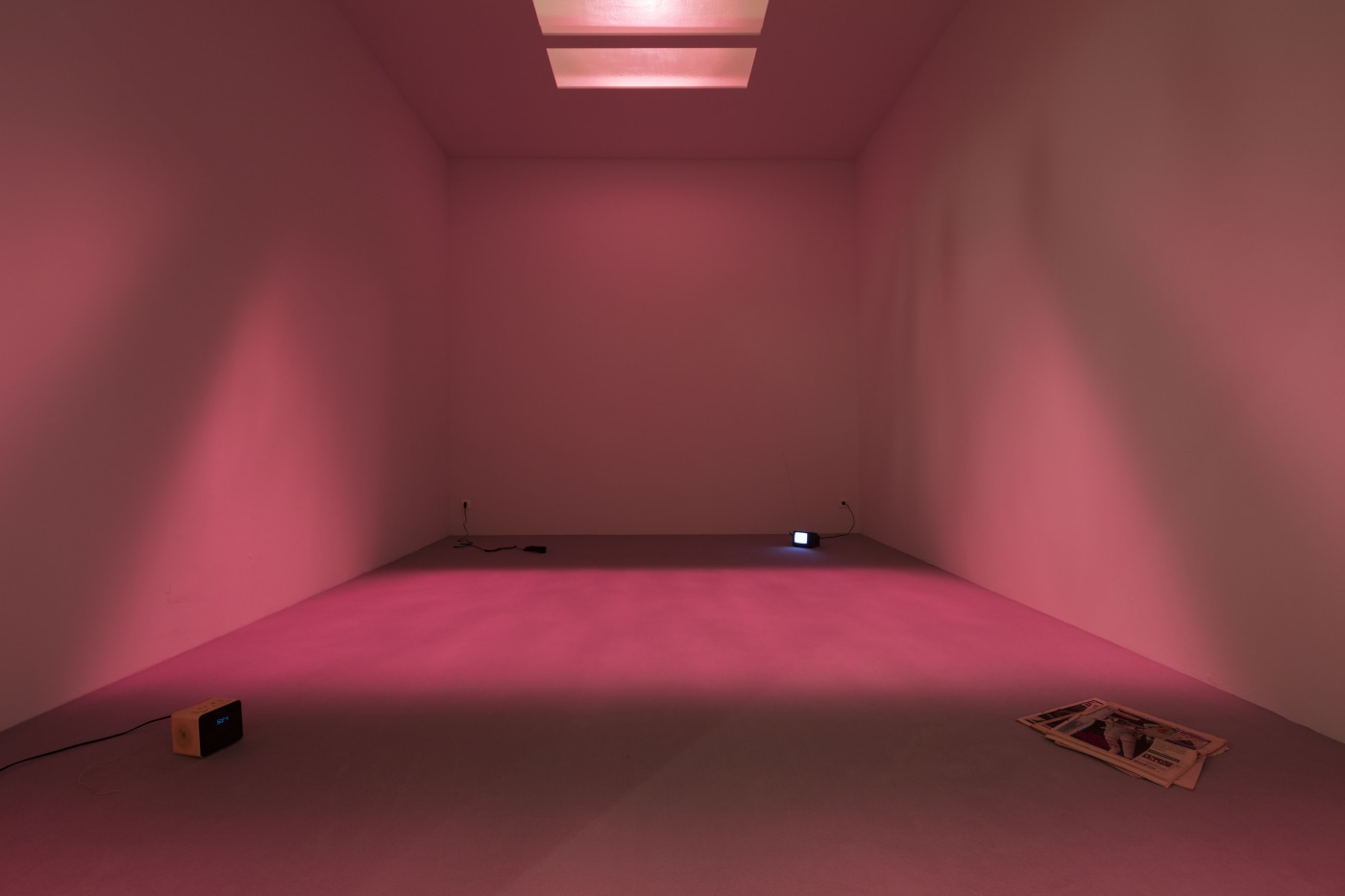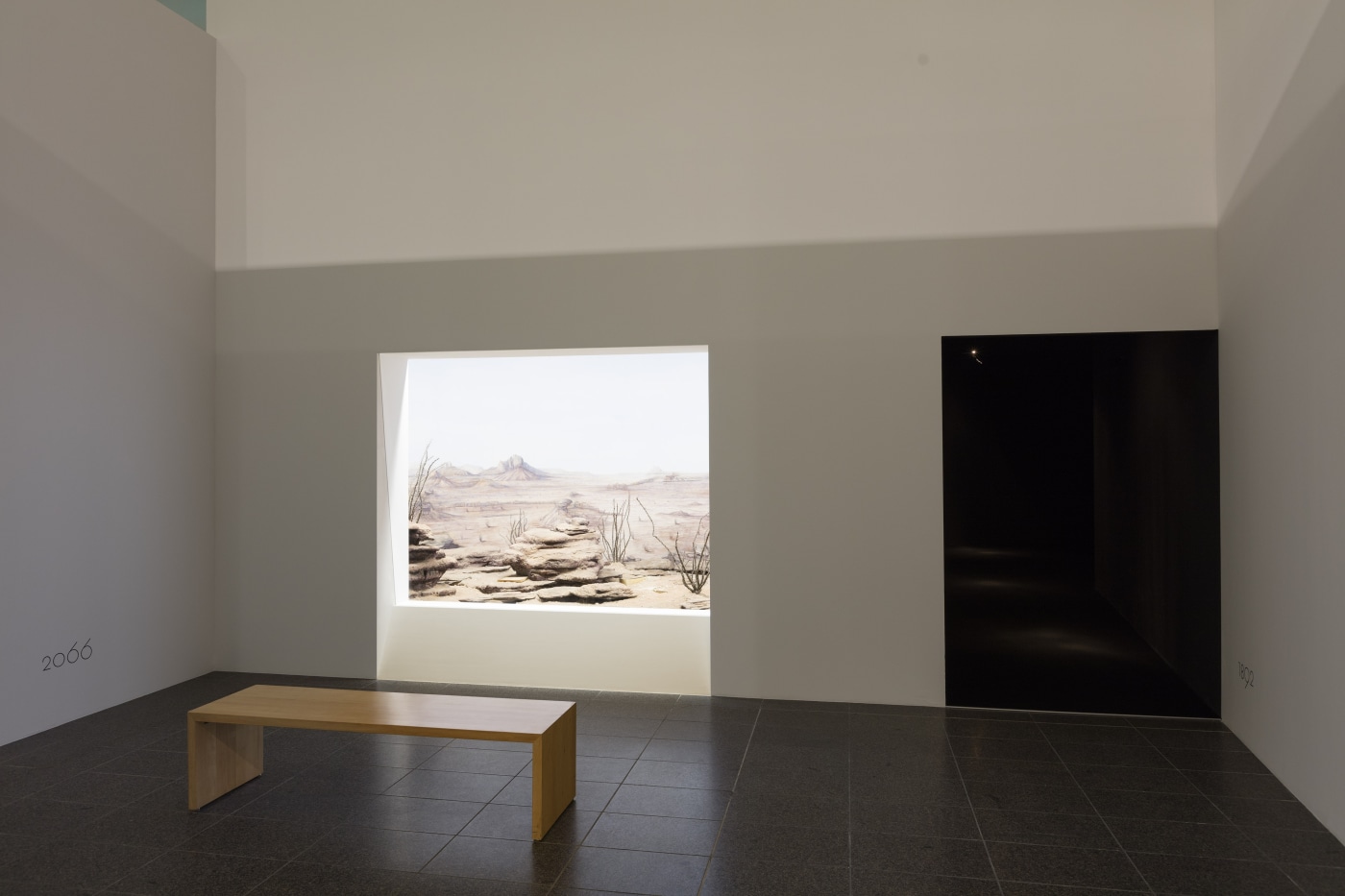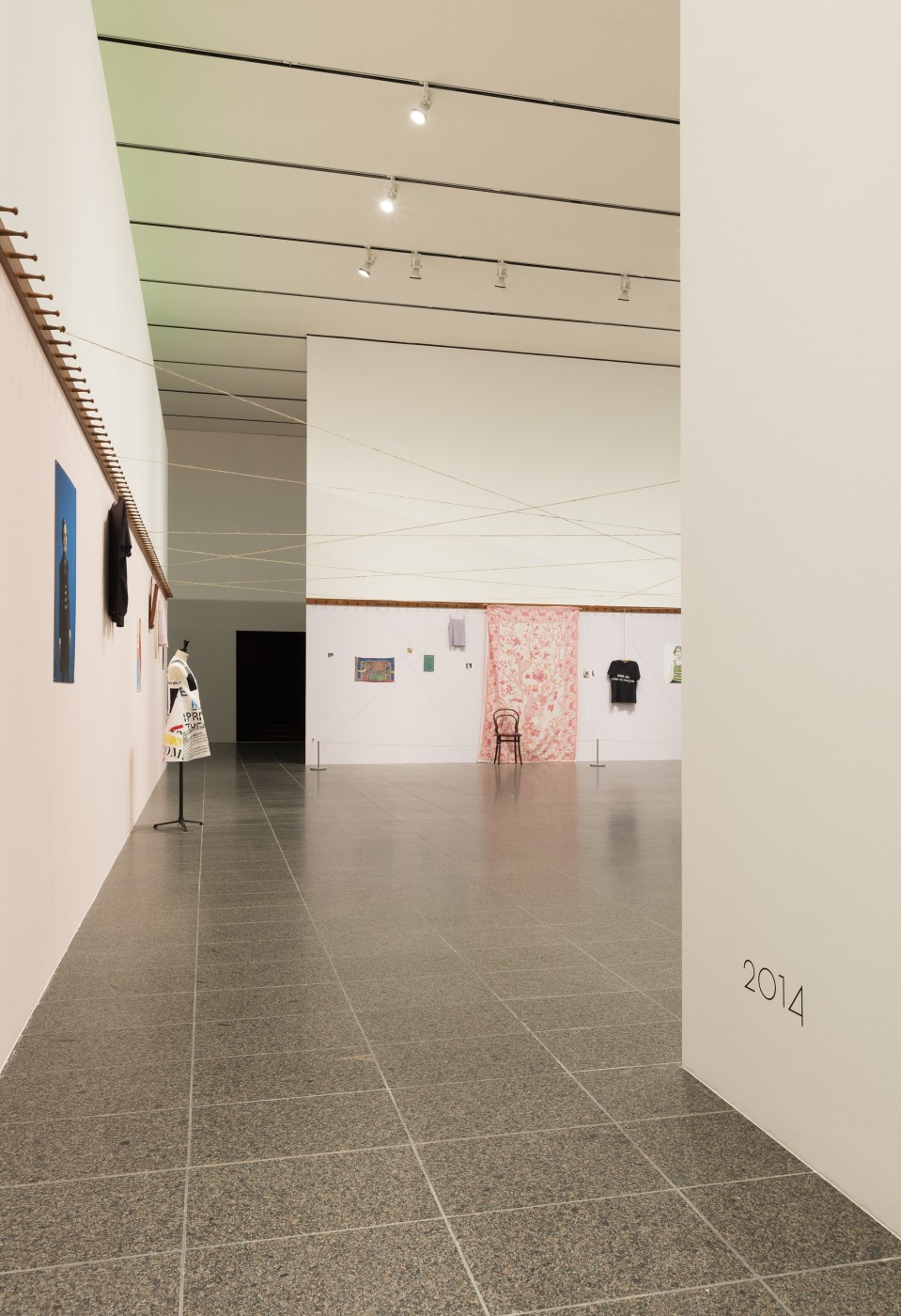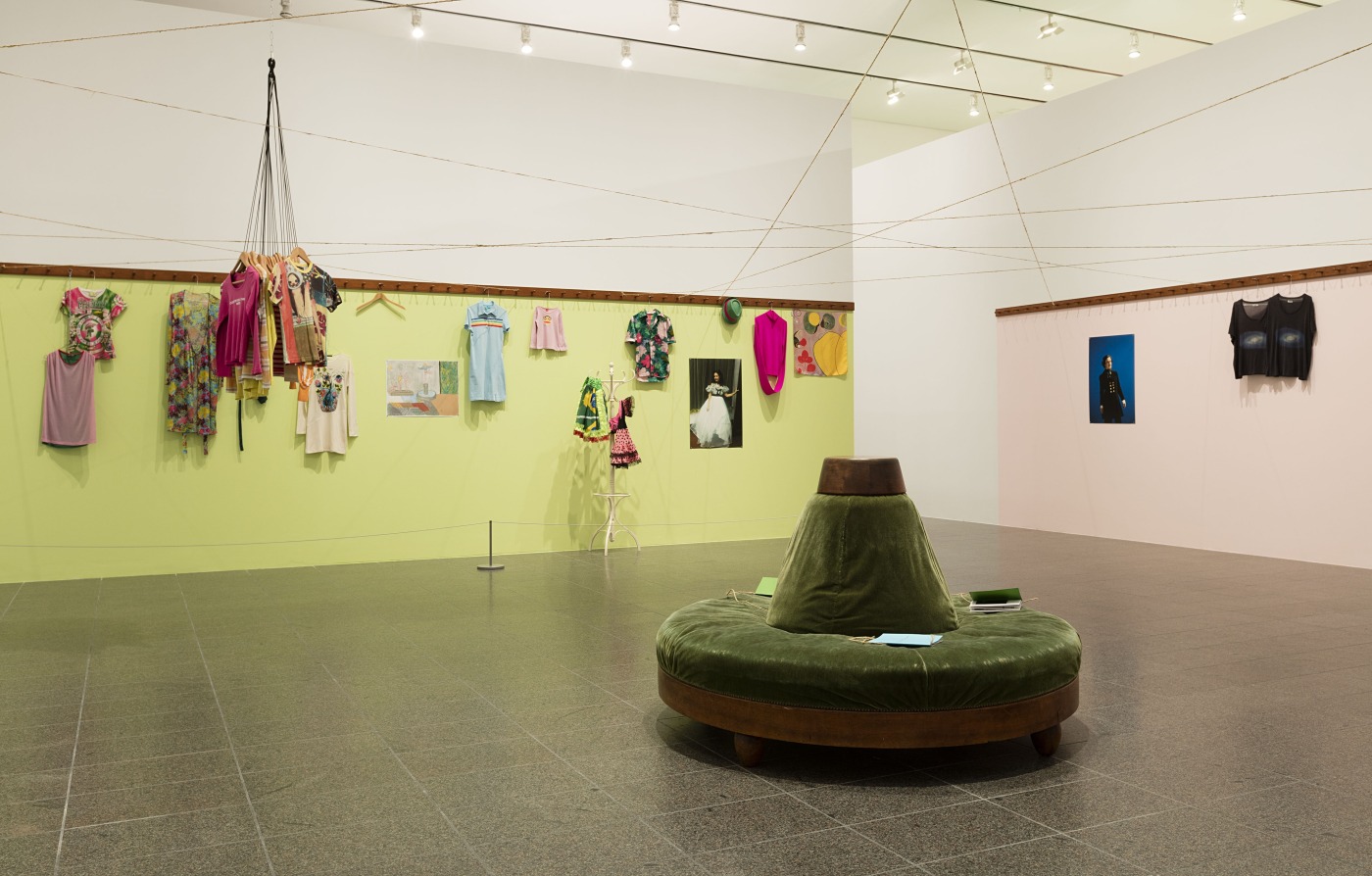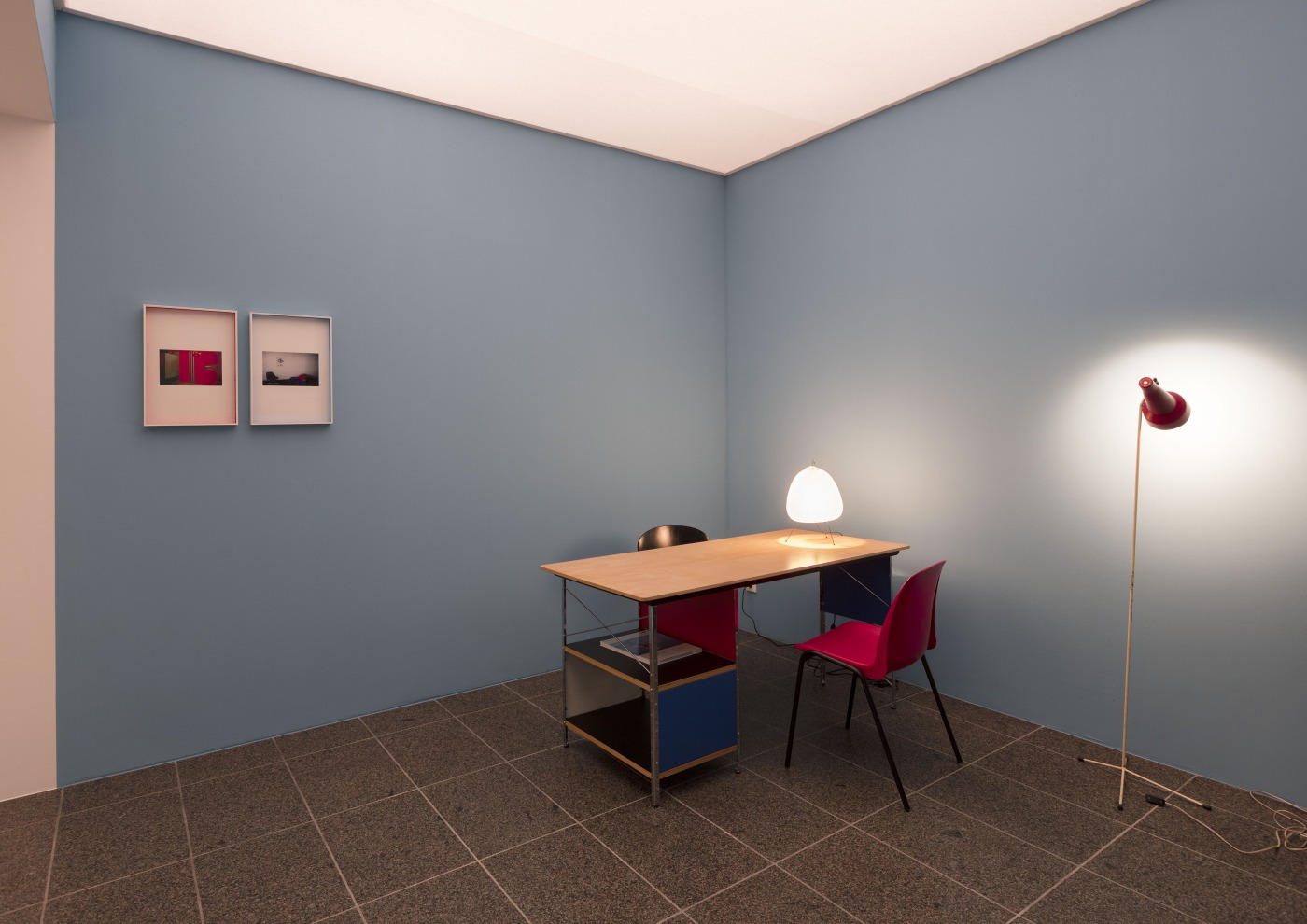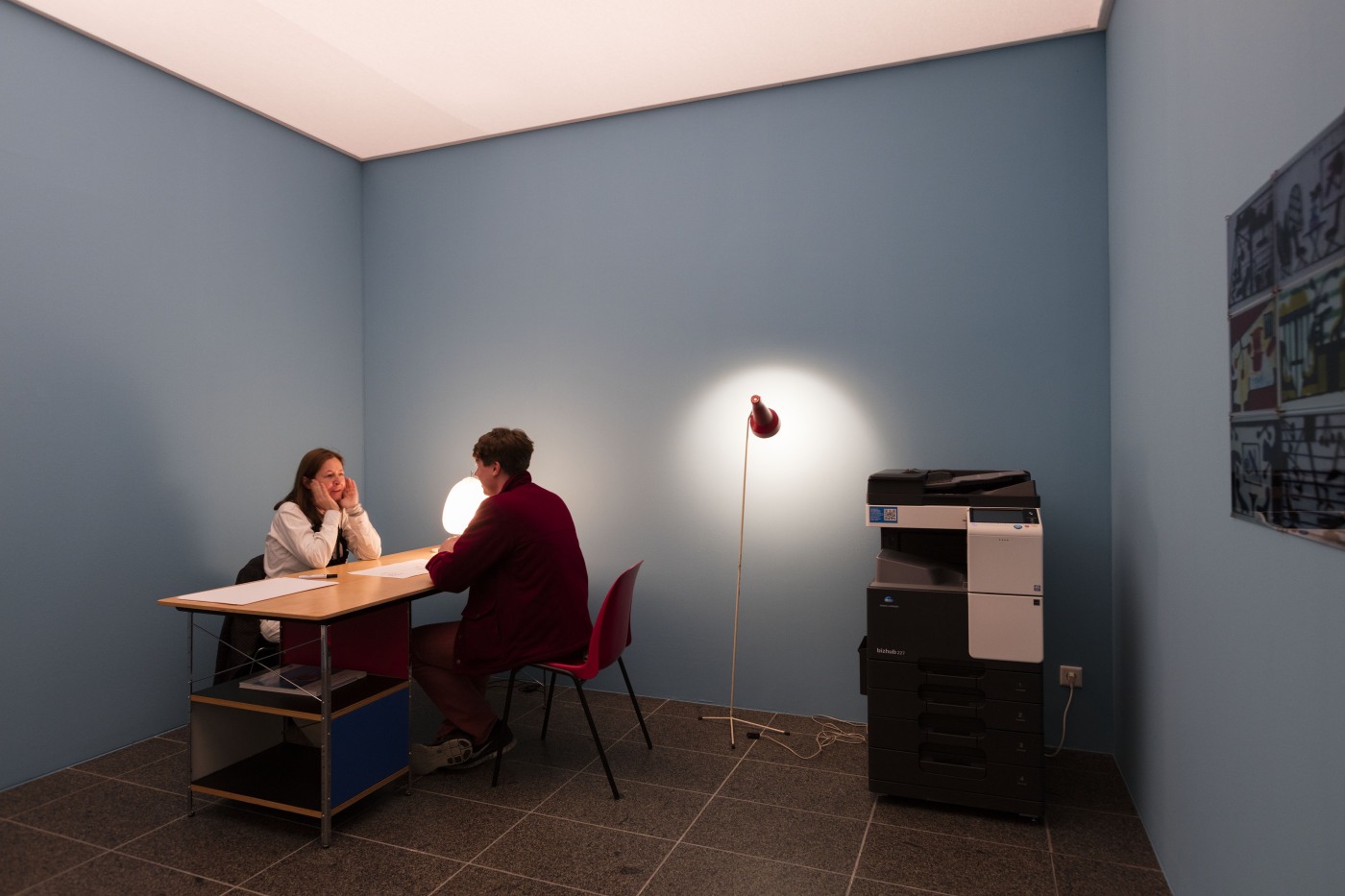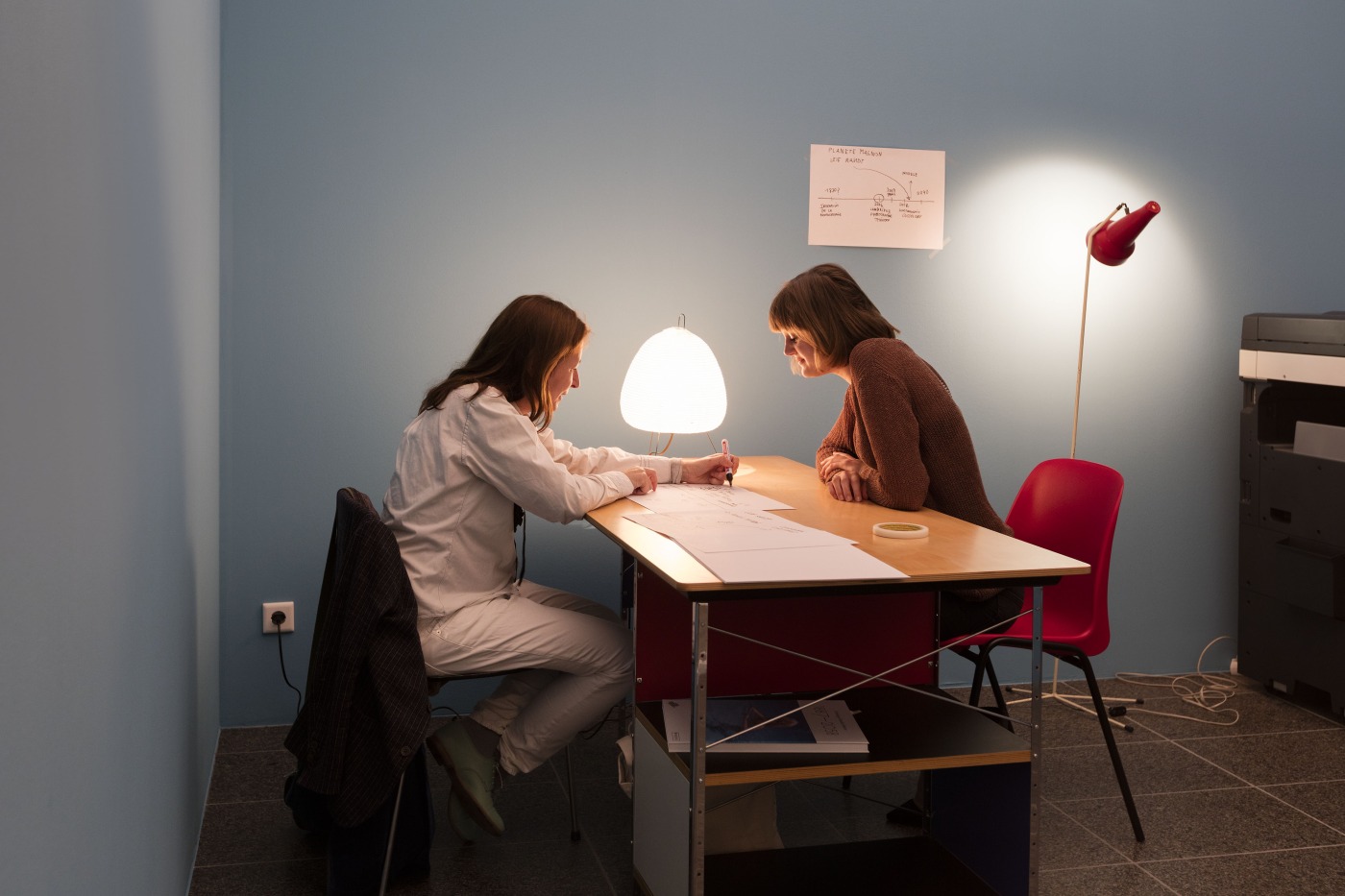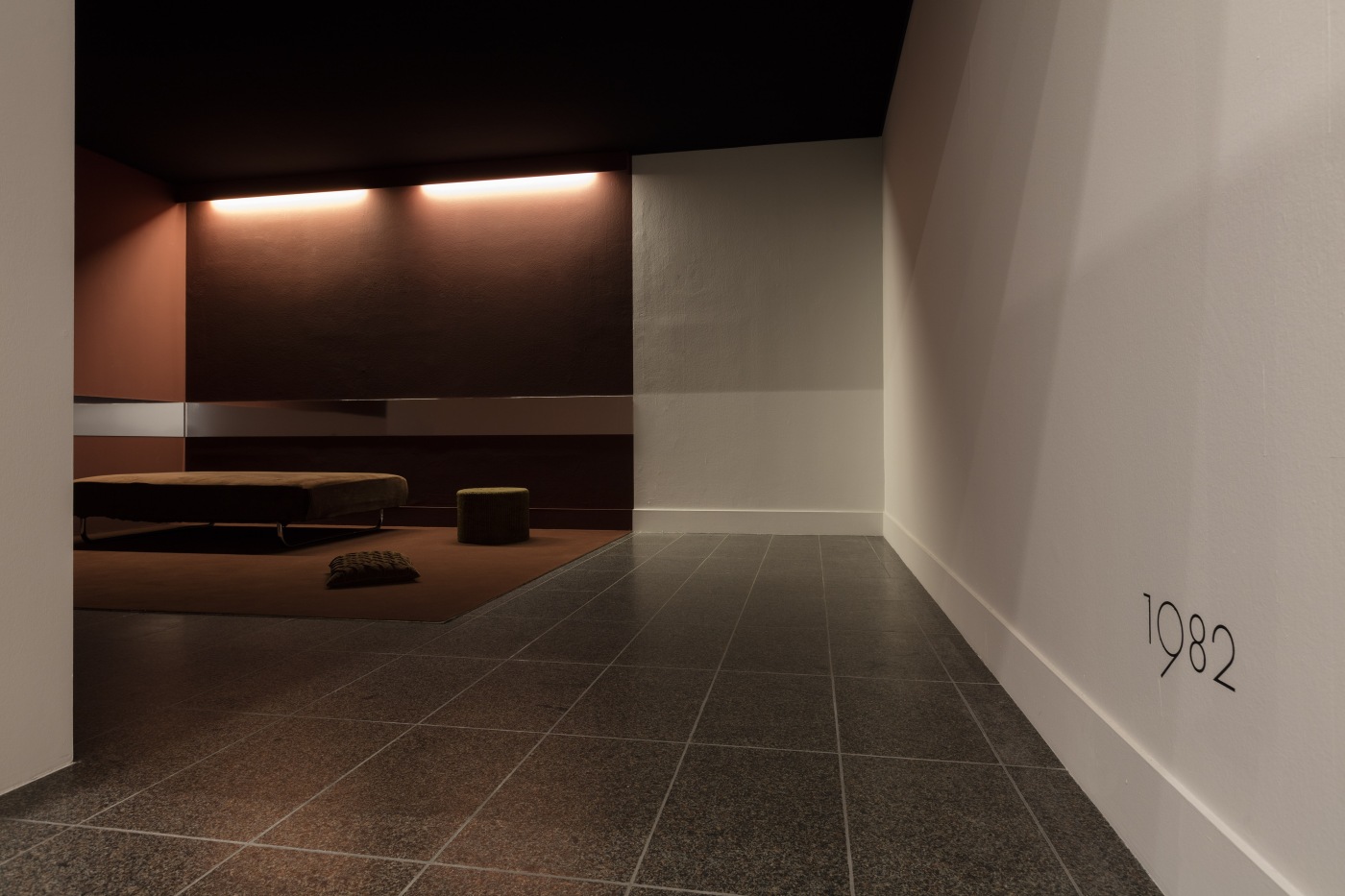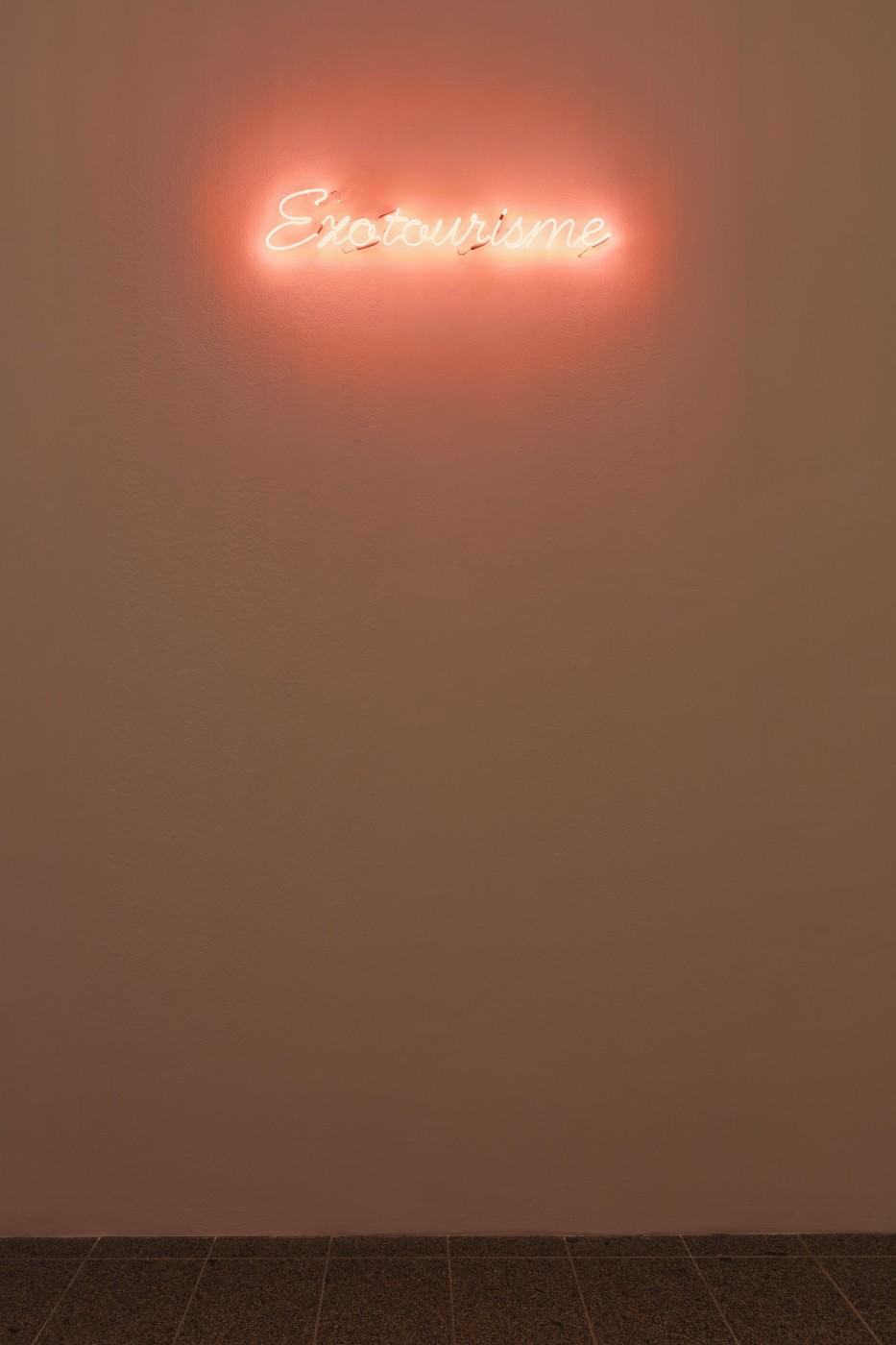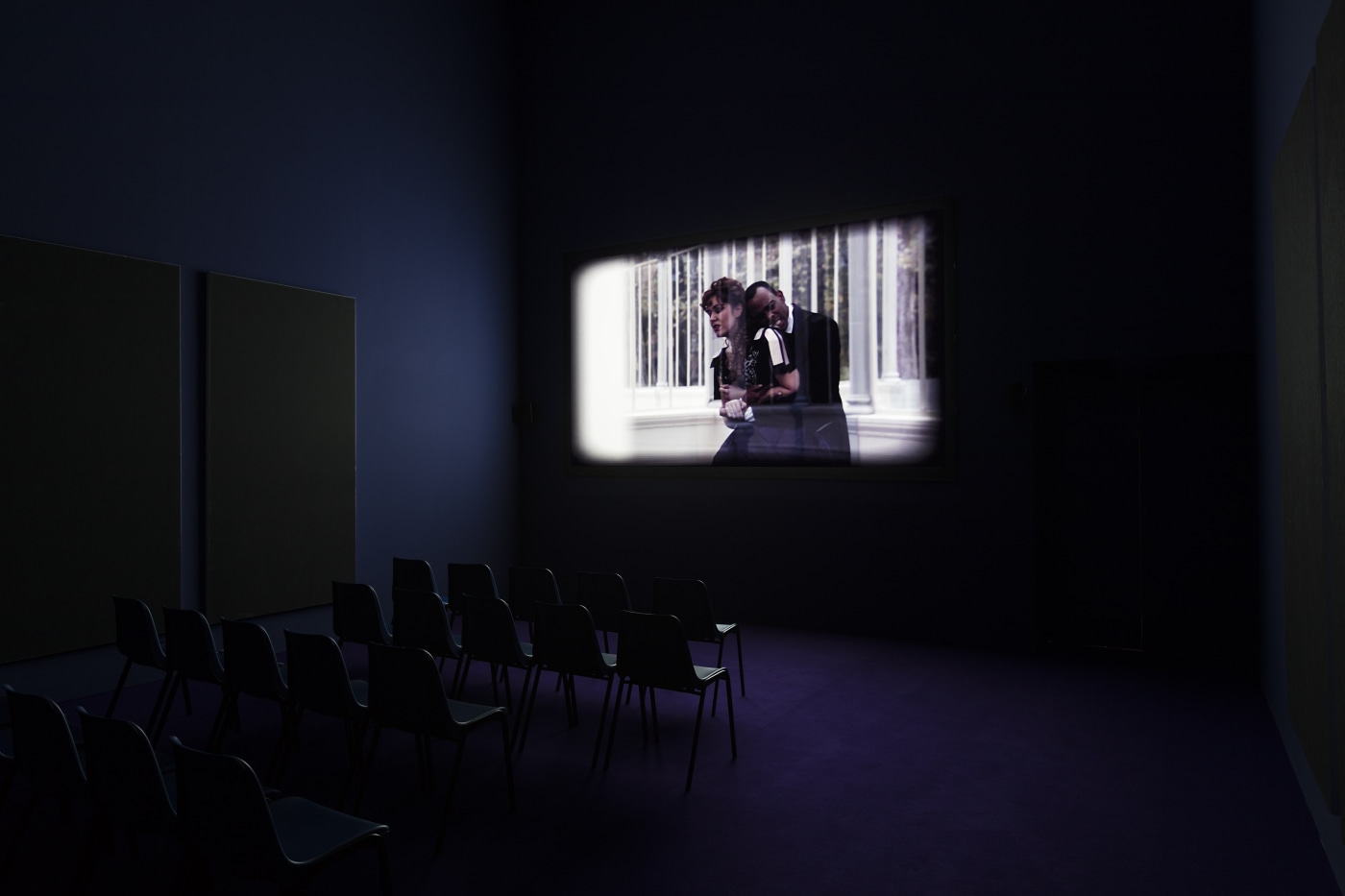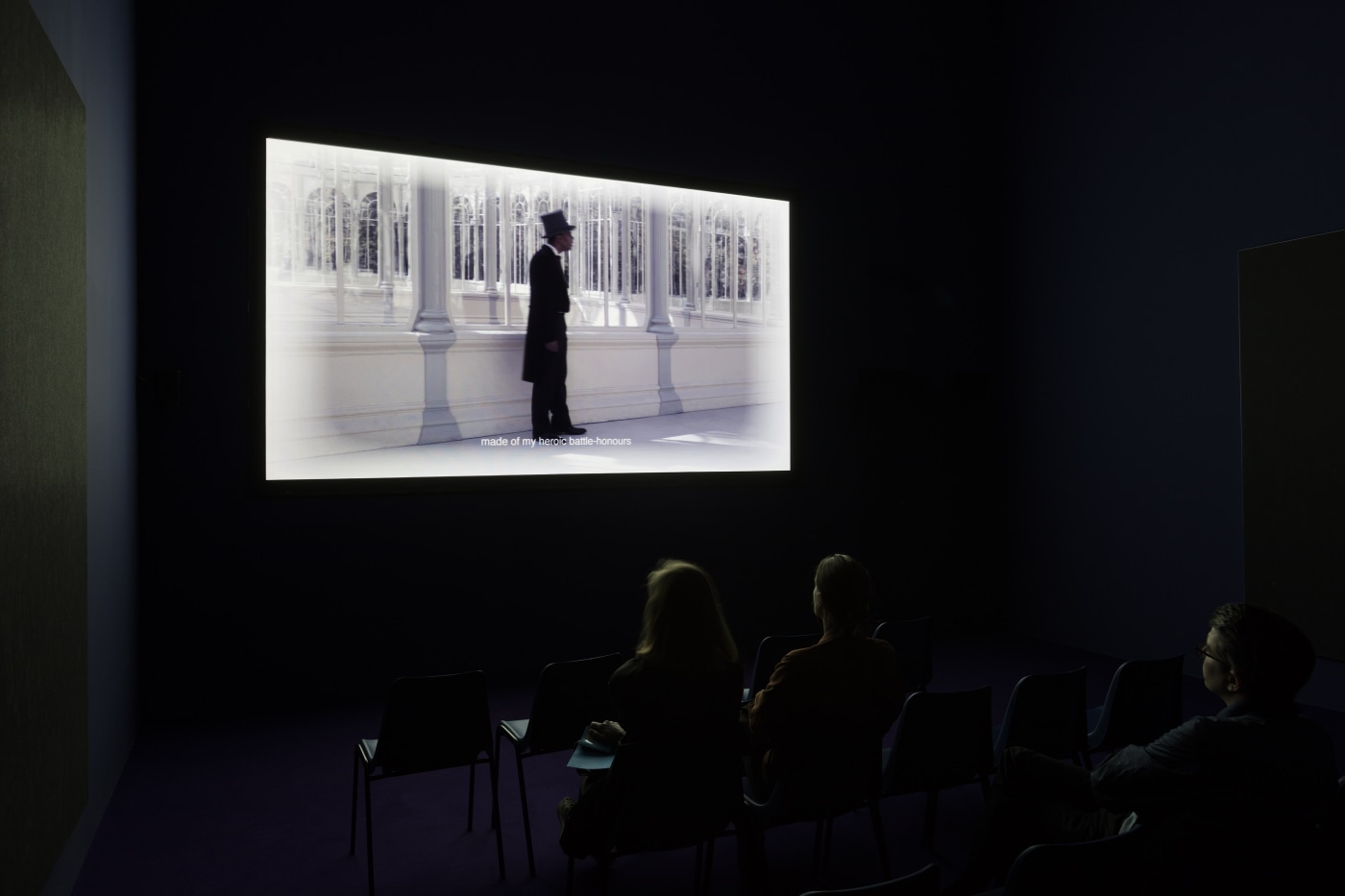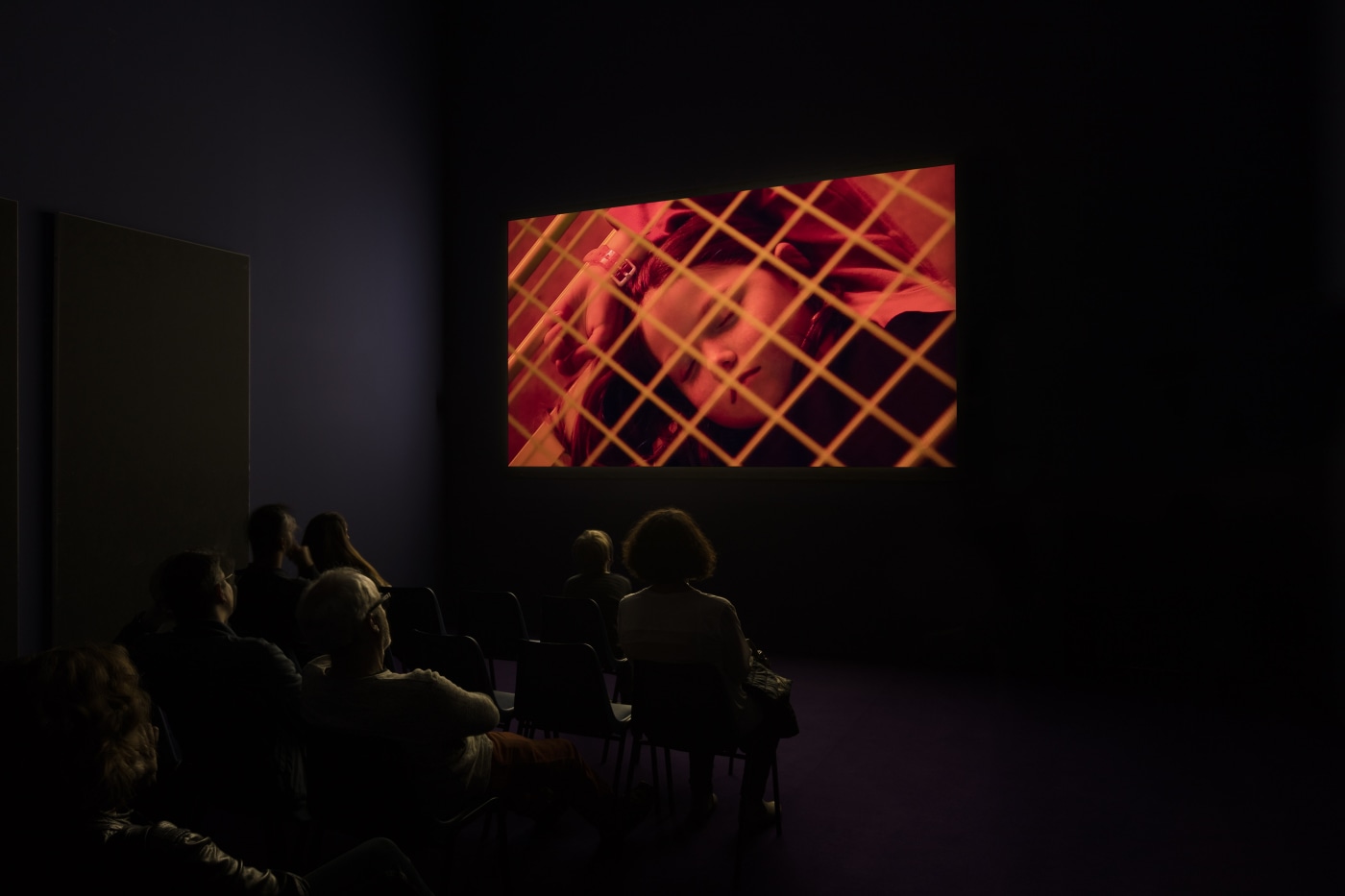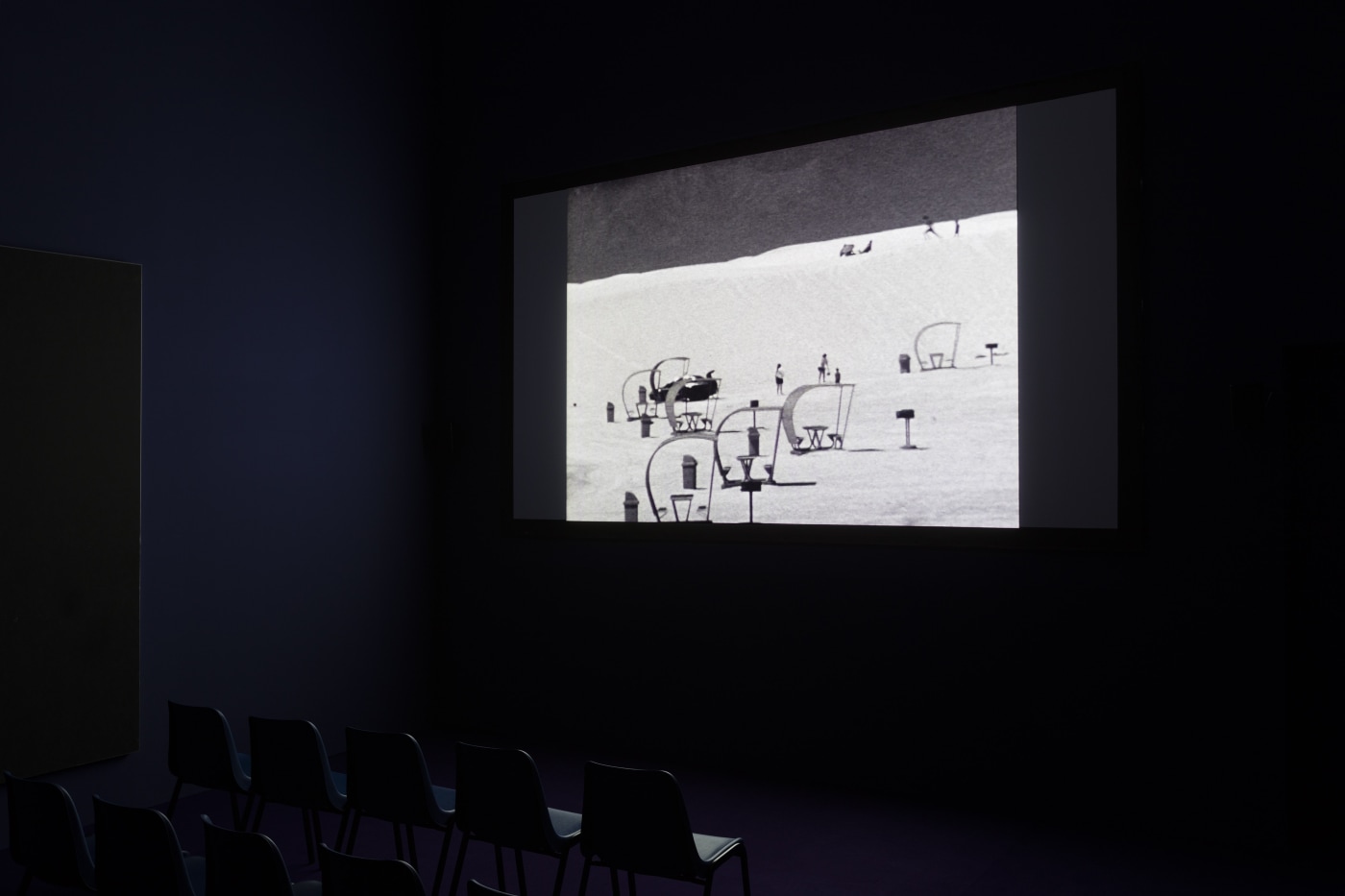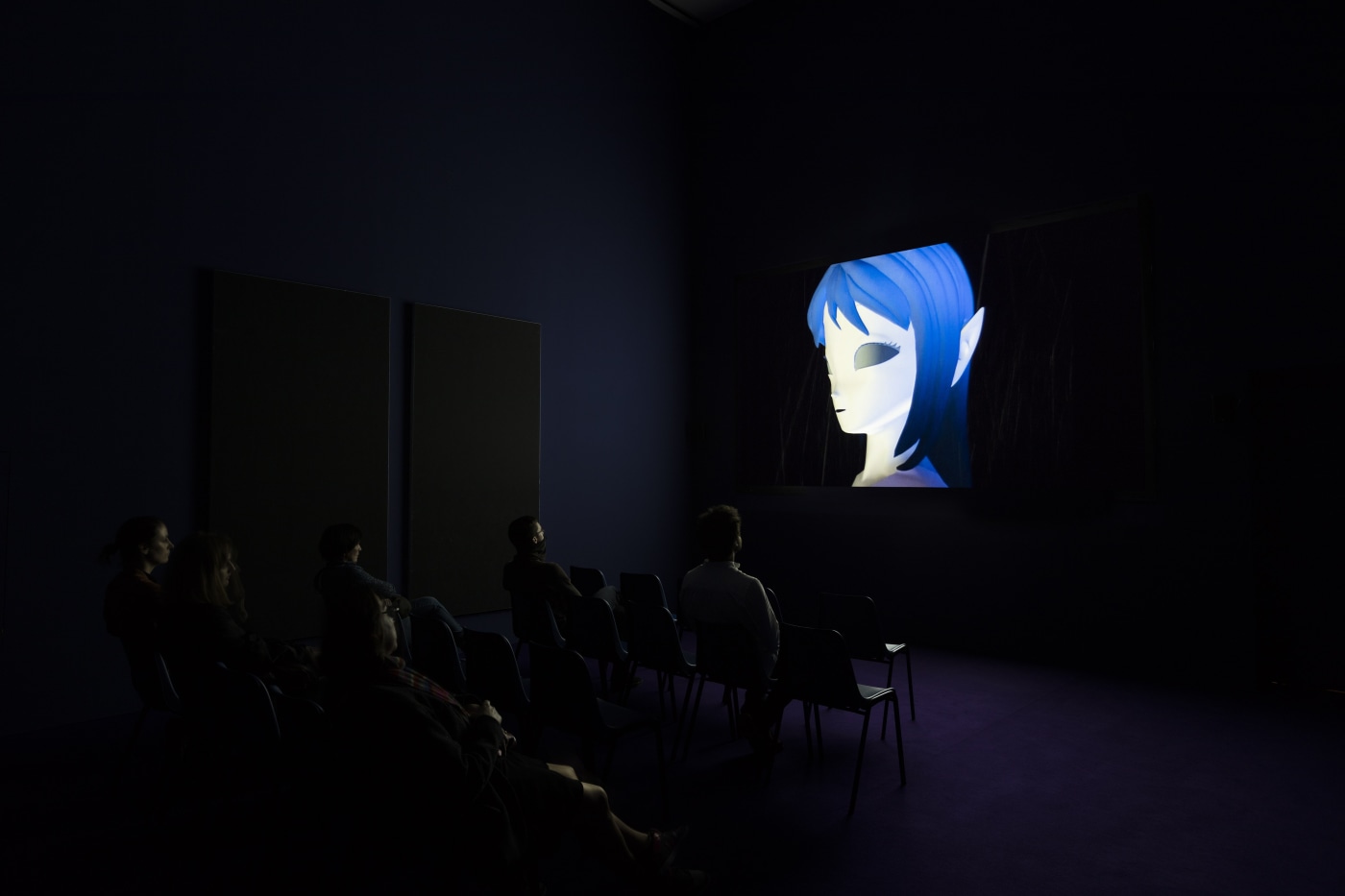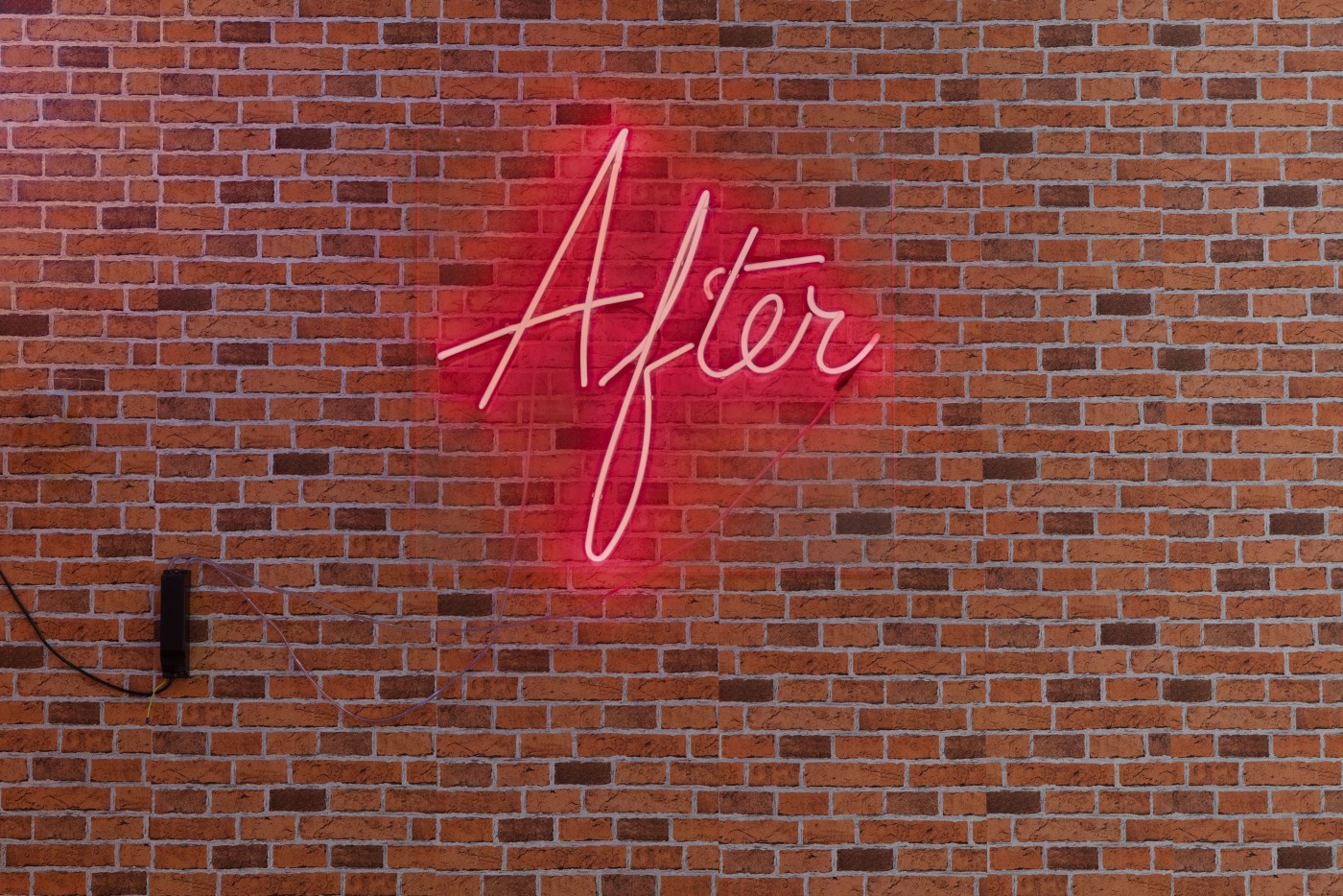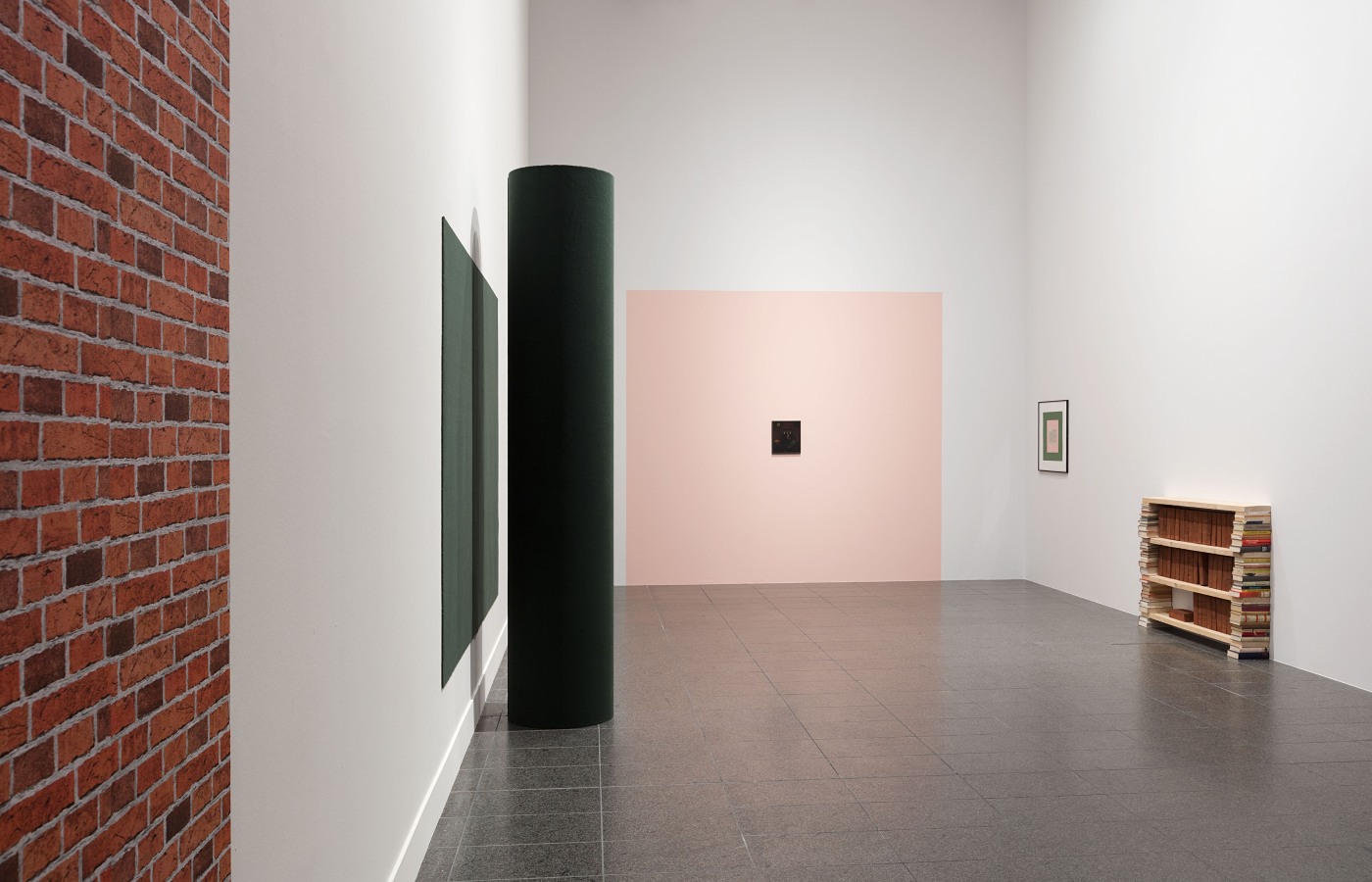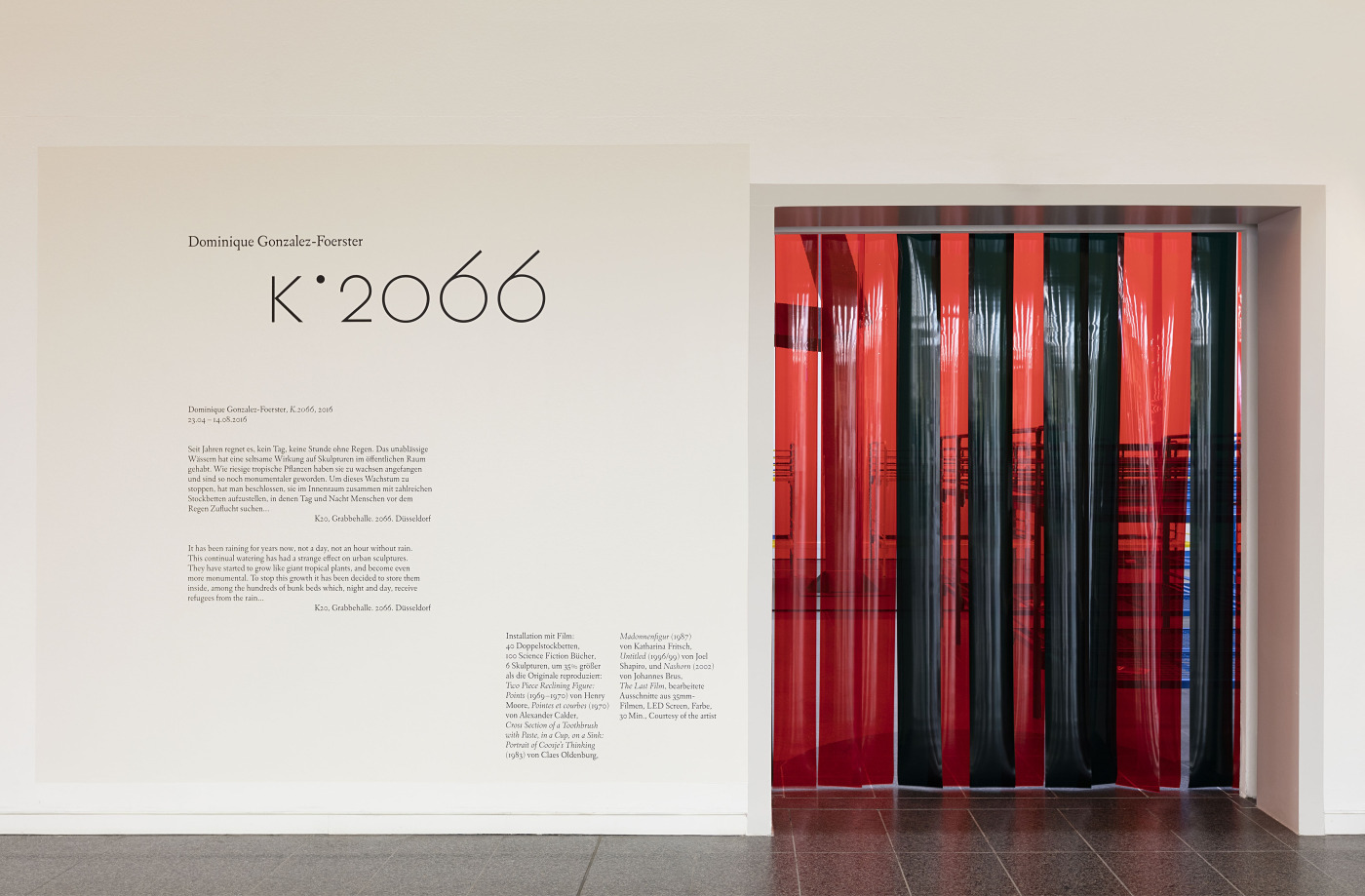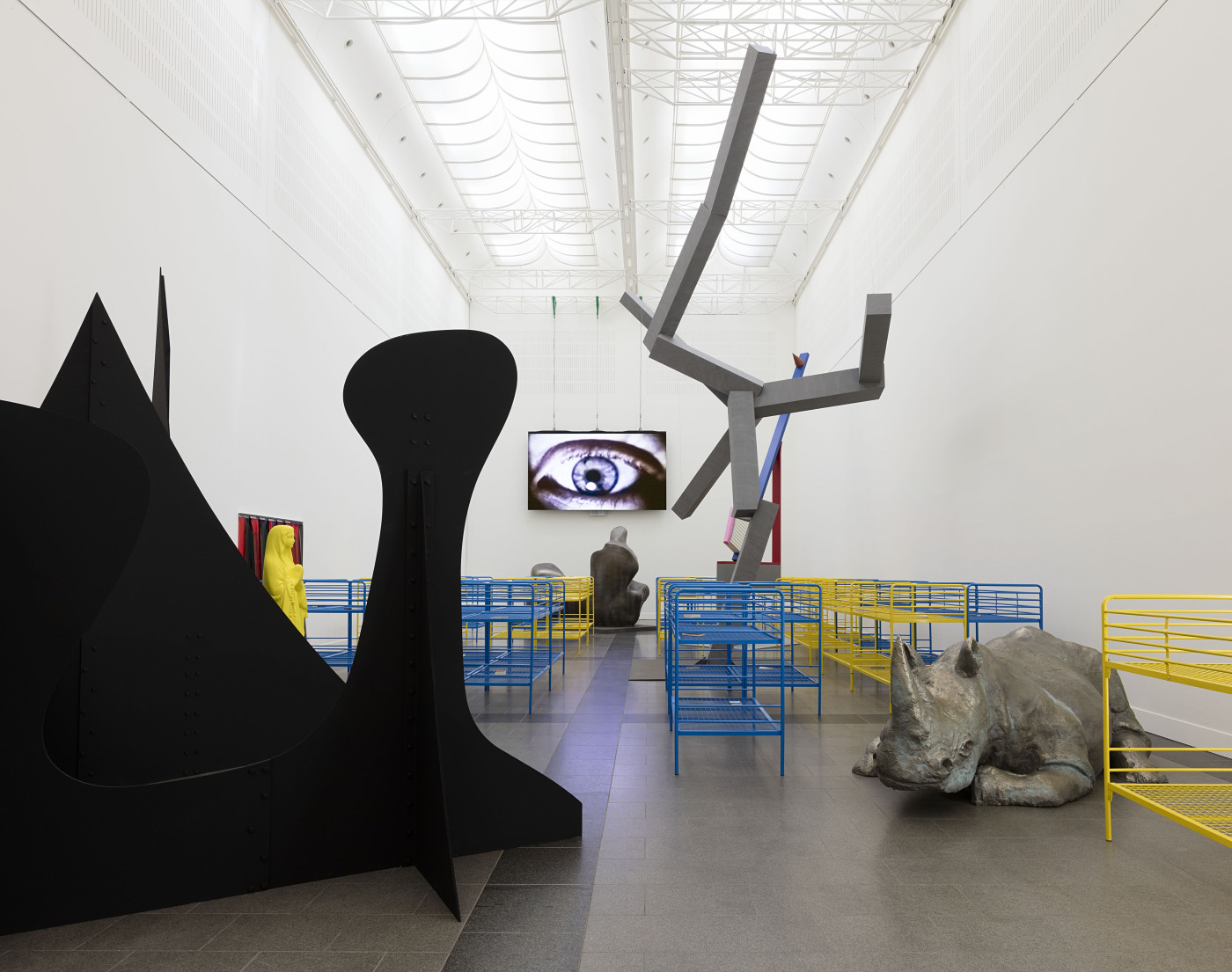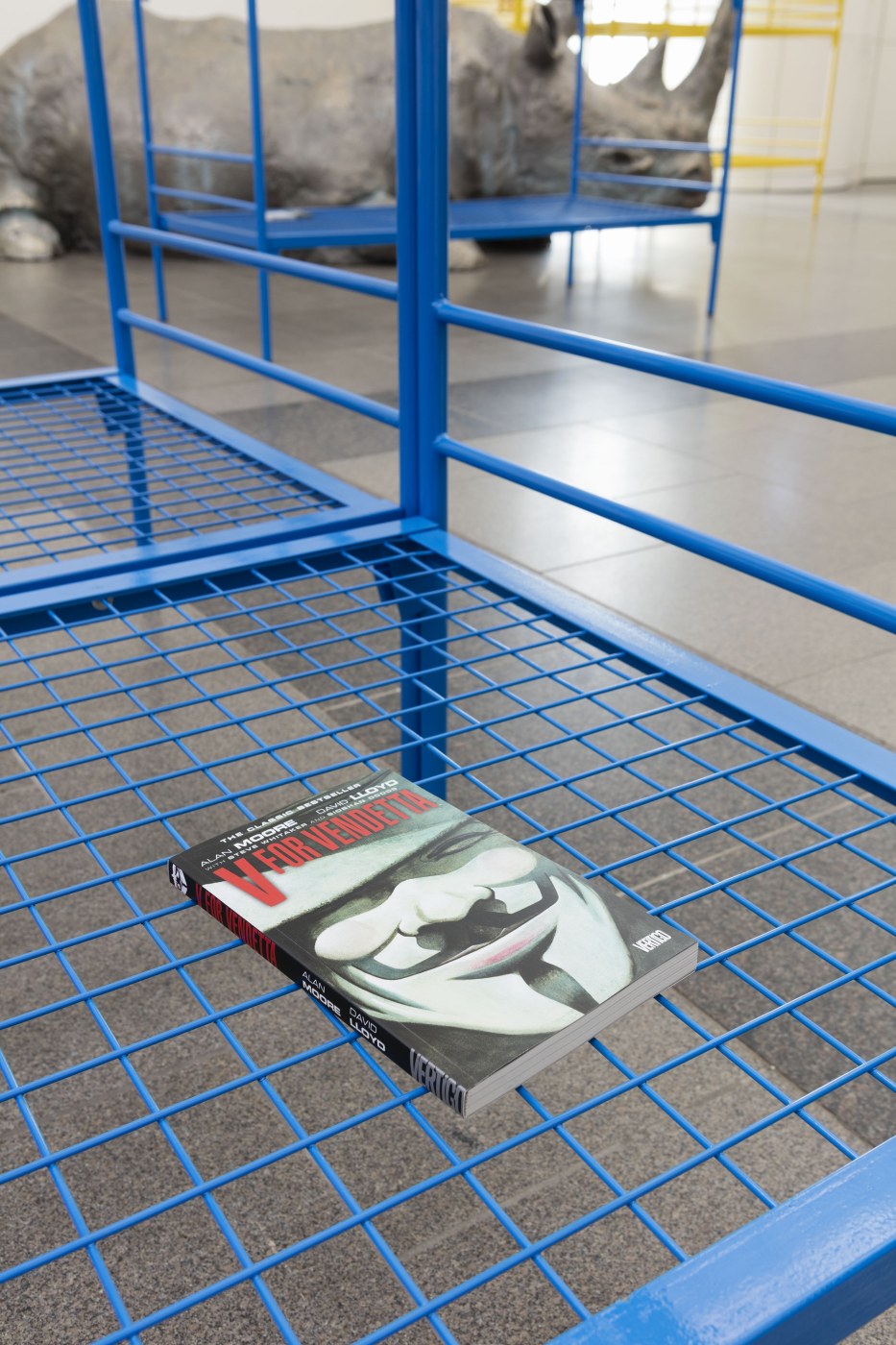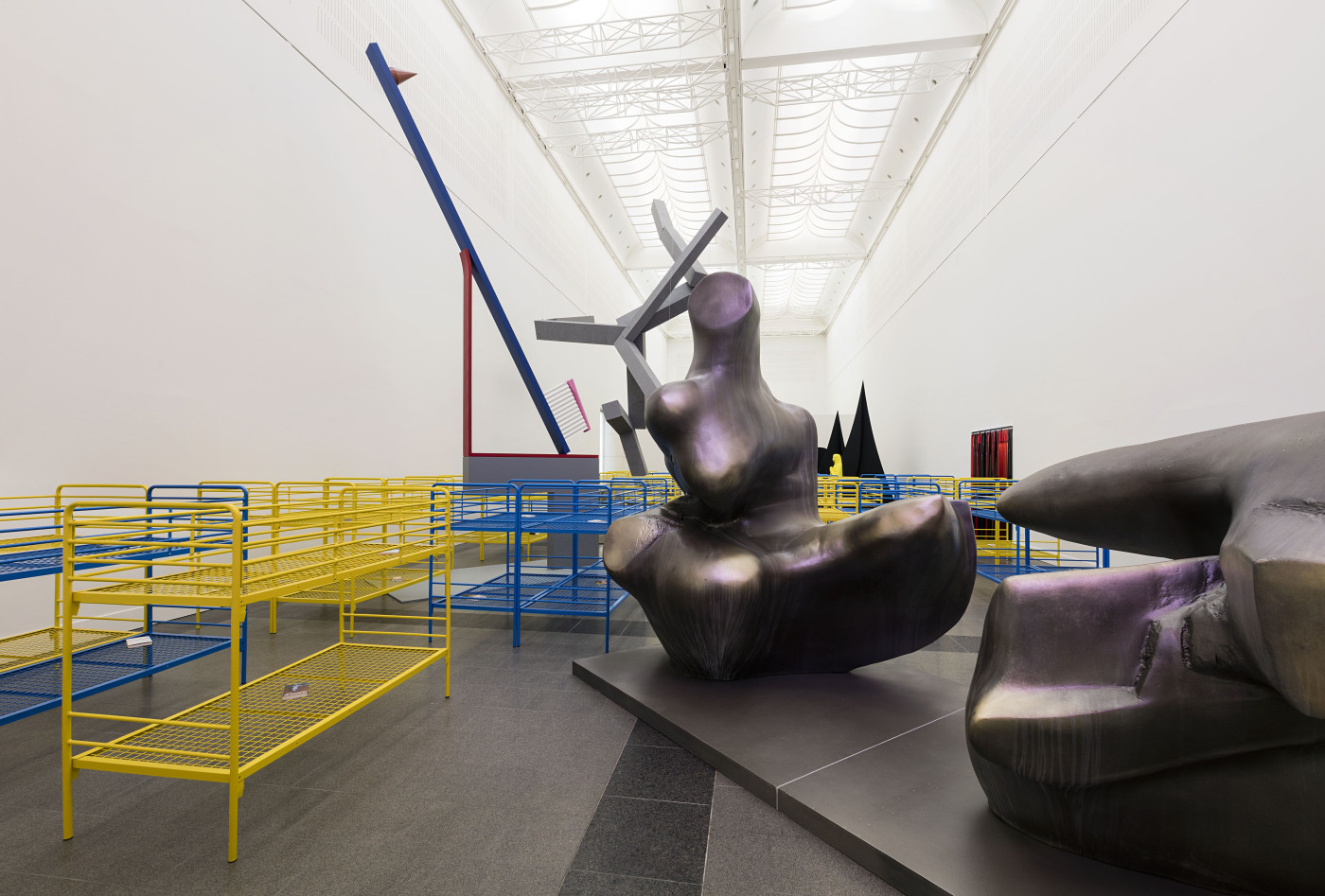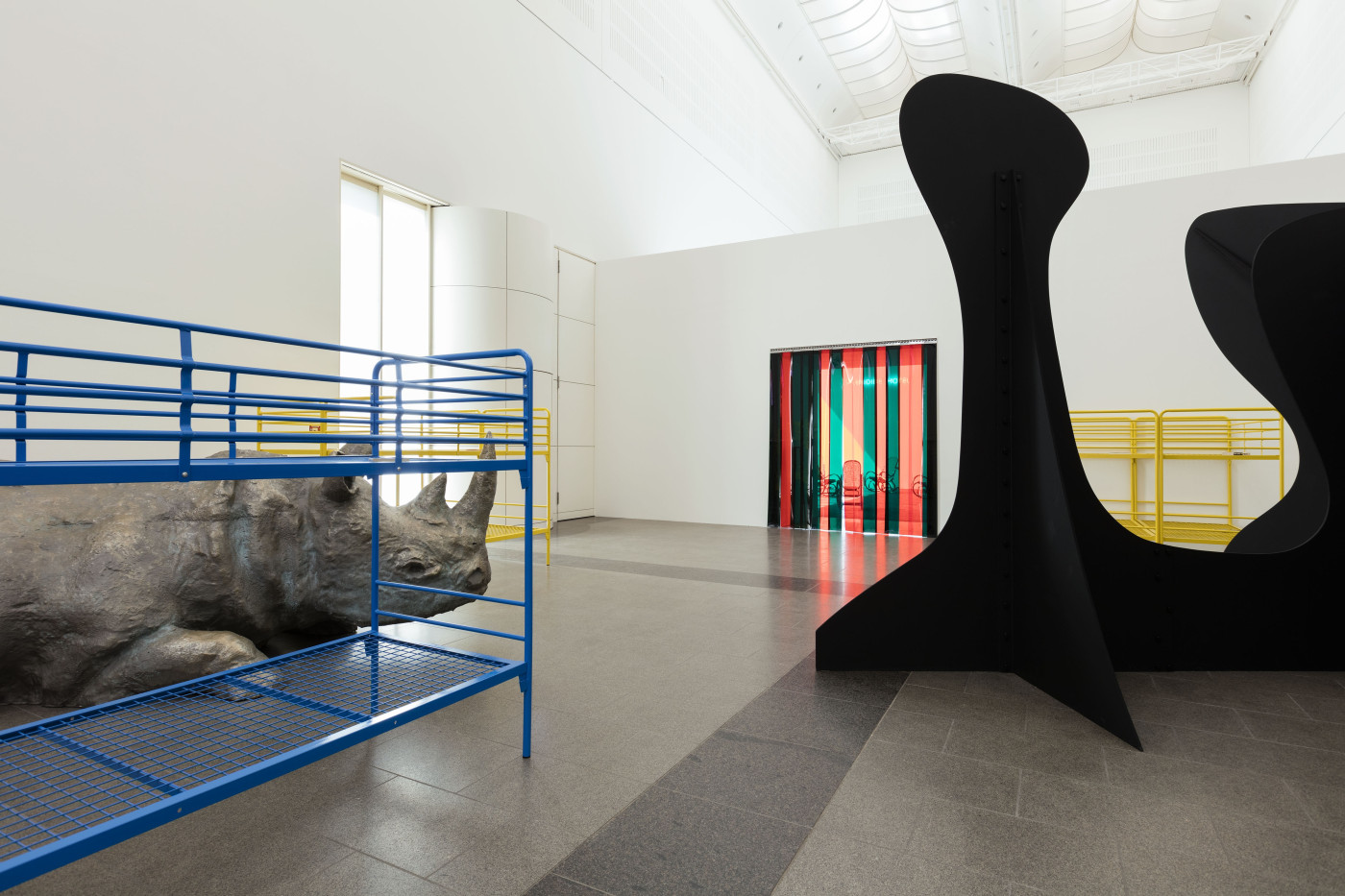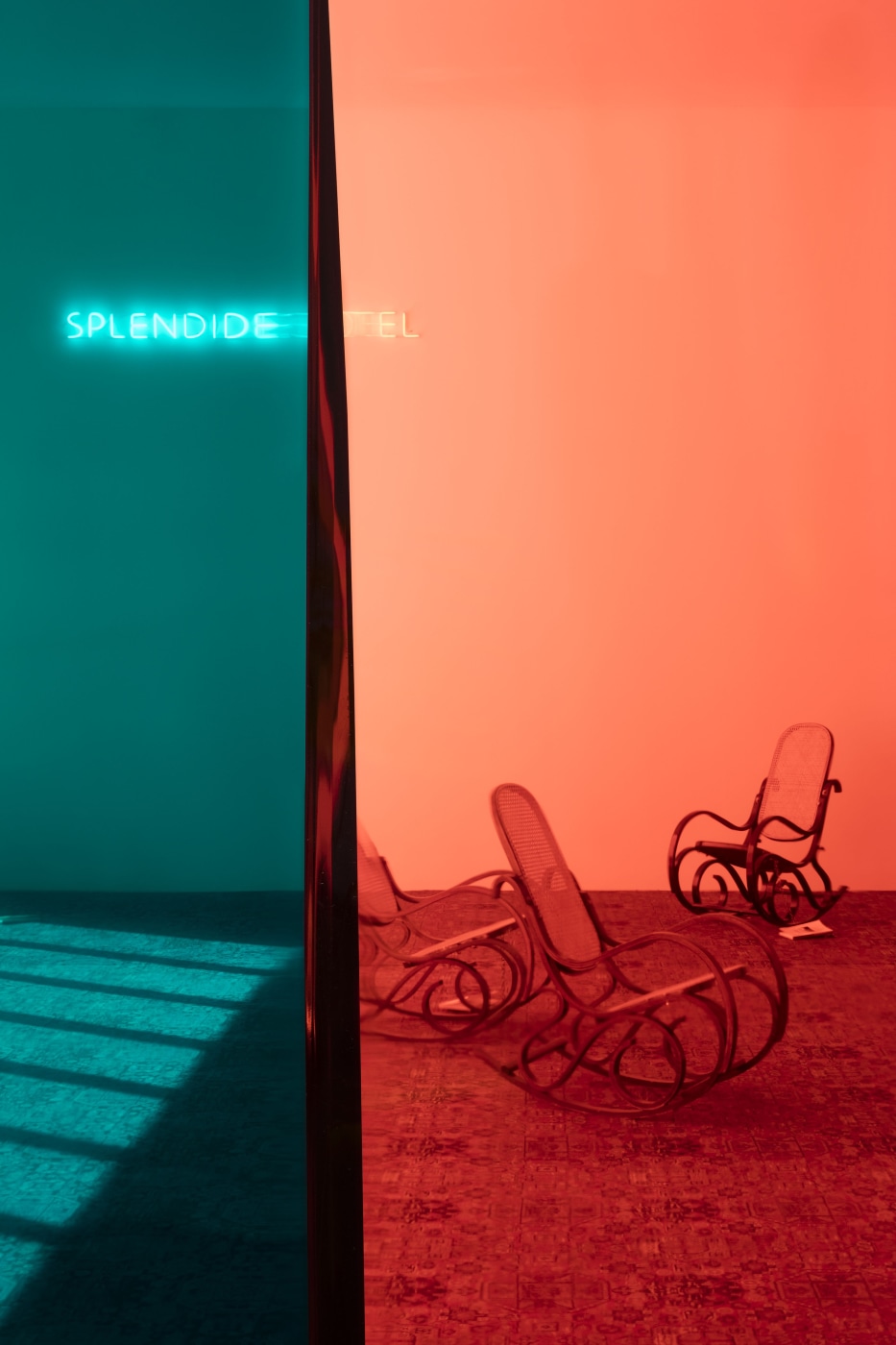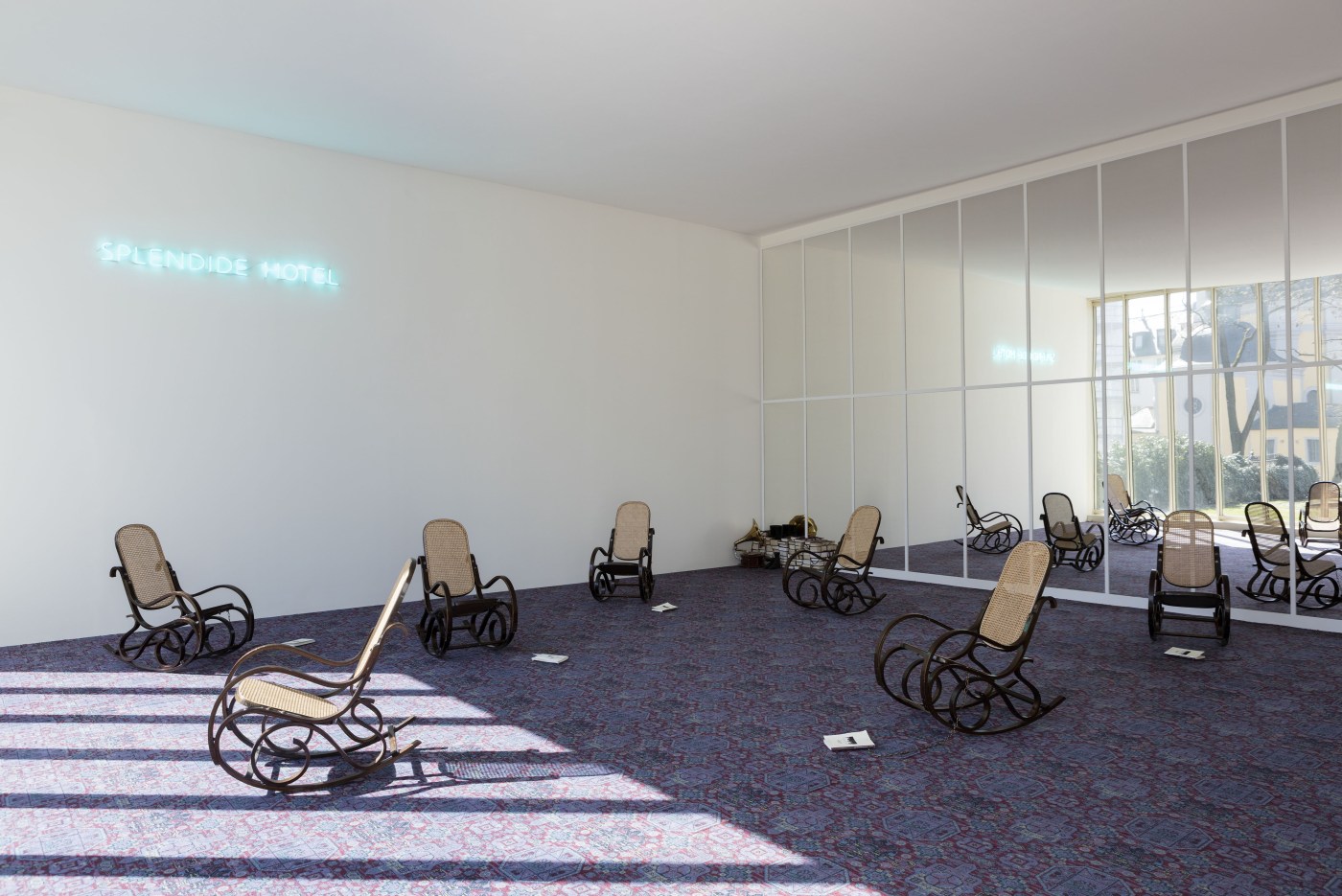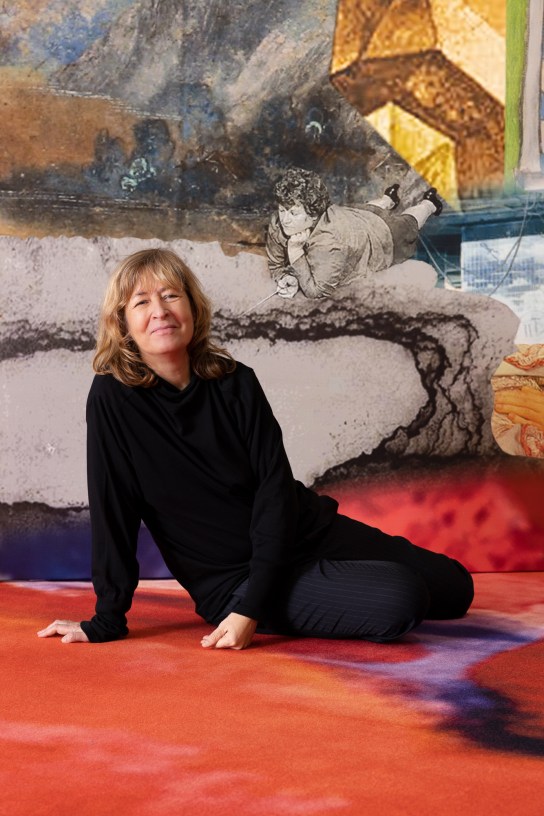
April 23—July 7, 2016
K20 Kunstsammlung Nordrhein-Westfalen, Düsseldorf
Dominique Gonzalez-Foerster. 1887–2058 Dominique Gonzalez-Foerster
Brasilia Hall, 1998/2000 Neon lighting, carpet, small monitor (built into the wall) A vast green carpet recalling grass, a neon sign that reads Brasilia Hall, and at the far end, a monitor placed inside a recess in a wall which screens the the artist’s film Brasilia. The installation evokes the democratic opens space of Brasilia – a modernist city designed between 1957 and 1960 by Lucia Costa and Oscar Niemeyer. Collection Moderna Museet, Stockholm Éspace 86 (rosa), 2016 (foreground) Environment Photo © Andrea Rossetti
Press Release
In the art of Dominique Gonzalez-Foerster (born in 1965 in Strasbourg, lives in Paris and Rio de Janeiro), everything revolves around experiences of and reflections on spaces and times. Using often minimal resources, she evokes places, people, and things that exist in one form or another in our collective memory. Her themes may be as diverse as the influence of hippiedom during the 1970s, the film director Rainer Werner Fassbinder, the urban utopia of Brasilia,...




